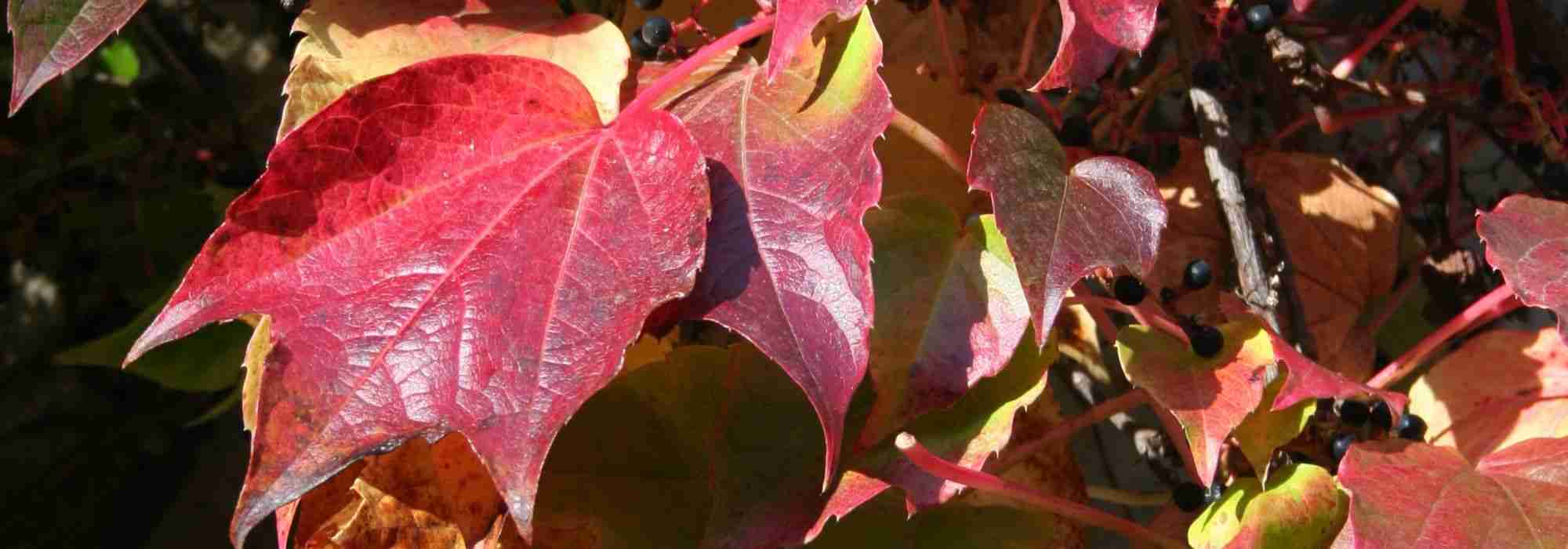
Climbing plants with autumn interest: the best varieties
ornamental, floriferous and fruit-bearing
Contents
A beautiful garden should be attractive all year round, and autumn is an ideal time for an explosion of colour and flavour, notably thanks to the use of climbing plants. They can have ornamental foliage that blazes with warm hues, flowers as beautiful as they are fragrant, or even produce decorative or tasty fruit. They are ideal along a wall, a pergola or an arbour, perfect for festooning a fence or even for climbing a tree. In sun or shade, there is a liana for every situation. Here I offer a selection of 7 tried-and-tested favourites, easy to grow and hardy, for an enchanting autumn.
Clematis terniflora
A very beautiful clematis that brings real added value to the garden in autumn. The Clematis terniflora actually begins to flower from August and often continues until the first frosts. Its small star-shaped flowers of pure white, often edged with a purple border, appear for several weeks and perfume a whole corner of the garden. Its glossy green foliage, streaked with silver, is semi-evergreen. After flowering, the flowers give rise to feathery, silky fruits, also silver-toned. Very decorative, they extend the interest of this climbing plant and persist for much of the winter.
Of rapid growth, this is an exuberant climbing plant that needs space. It can coil its voluble stems to over 7 m and smother neighbouring plants. Very easy to grow, robust and hardy down to -15°C, it tolerates sun as well as partial shade. Plant it in fertile, humus-bearing soil, cool but well drained. Once established, this clematis can withstand drought and heat.
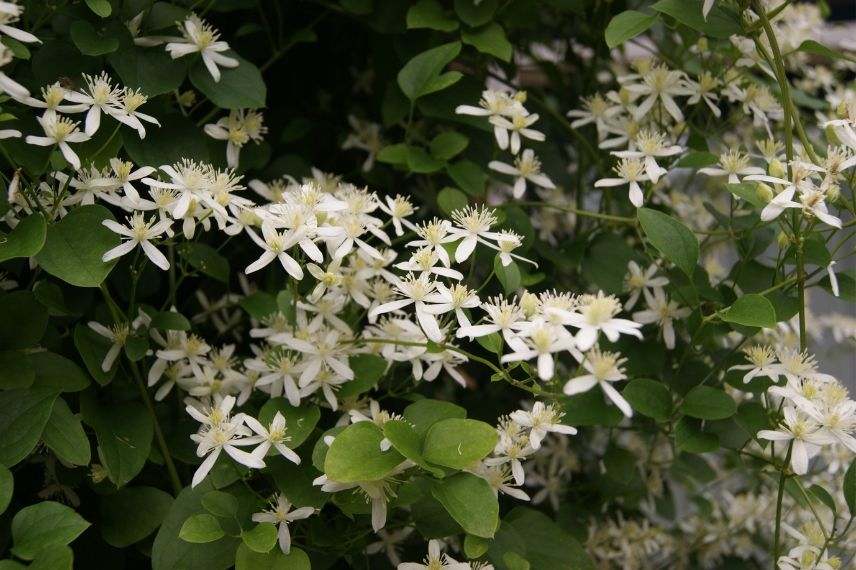
- Discover all our varieties of autumn-flowering clematis.
- Discover our page on Clematis: plant, prune and maintain.
Boston ivy 'Veitchii'
The Parthenocissus (or Ampelopsis) ‘Veitchii’ is a virgin vine prized for its large foliage. Deciduous, it is bronze at its bud burst period in spring, then becomes glossy green in season. It then waits for temperatures to fall before bursting into flame, colouring autumn with vivid yellows, oranges and blazing reds ! This is also the time this vine bears its small dark-blue berries, borne on a red peduncle. The contrast with the foliage is simply beautiful. The flowering, which occurs in late spring, is unobtrusive but attracts pollinators.
Very accommodating and easy to grow, this climbing plant can reach, even exceed, 8–10 m. It attaches itself unaided to supports by climbing roots that do not damage walls. Tolerant of drought, pollution, wind and sea spray, it will grow in most firm, cool, well-drained soils, in full sun, partial shade and even shade. Its hardiness is also very good, as it withstands -15°C or even lower without flinching.
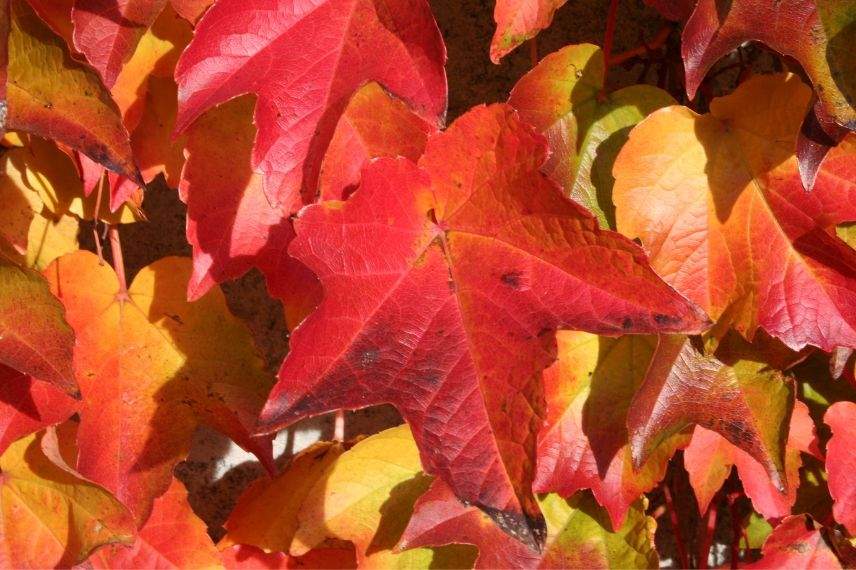
- Discover our range of Virgin vines as well as our factsheet on Virgin vines: planting, pruning and care.
Discover other Climbers
View all →Available in 0 sizes
Available in 0 sizes
Available in 0 sizes
Available in 0 sizes
Available in 0 sizes
Available in 1 sizes
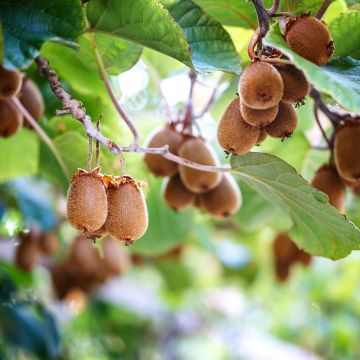
Available in 2 sizes
Available in 1 sizes
Available in 1 sizes
Liana rose 'Kiftsgate'
liana rose ‘Kiftsgate’ (Rosa filipes ‘Kiftsgate’) combines many qualities. Although, as with most roses in this category, its flowering is exceptional, occurring later than for most other varieties. In height of summer, this climbing plant is literally covered by a cloud of small wild-looking roses with a relaxed, informal appearance. Grouped in clusters, they are pure white, highlighted by a centre of yellow stamens, and give off a pleasant fragrance. The spectacle does not end there! Flowering is indeed followed by a superb display of fruit: a multitude of orange-red rose hips that persist well into winter. As decorative as the flowering, this fruit display is further highlighted in autumn by the deciduous foliage, which turns from bright green to orange.
With rapid growth, this giant needs space, as it can climb to over 10 metres. Very disease-resistant, robust and undemanding, it grows in almost any rather fertile, fresh soil, in sun or partial shade. Good hardiness (to at least -15°C) makes it suitable for all gardens.
Ornamental vine 'Purpurea'
Vitis vinifera ‘Purpurea’ combines ornamental and culinary qualities. The main asset of this ornamental grapevine is its very decorative deciduous foliage, which turns from purplish green to deep purple in late season. In addition to these autumnal colours, it produces clusters of black grapes that can be eaten as table grapes. Enough to satisfy both the eye and the palate.
With tendrils in the axils of the leaves, this climbing plant elegantly drapes itself over any support it can cling to. Hardy to -15°C, it thrives in a sunny position, in any fairly heavy, fertile soil, even clay, that is moist but well drained. Mature, it can reach 6 to 7 metres in height.
- Discover our guide on different Ornamental vines: how to choose and to grow them, as well as our range of grapevines.
Climbing hydrangea 'Winter Surprise'
Climbing Hydrangea ‘Winter Surprise’ is an ornamental climbing plant all year round. In late spring, flattened inflorescences of white star-shaped flowers elegantly adorn this highly ornamental liana. Thick foliage is evergreen to semi-evergreen. It turns a superb deep purple in autumn and winter, particularly striking on the undersides of the leaves.
Smaller than the typical form (5 m x 5 m), it is a hardy variety that thrives in partial or dappled shade. Give it a loose, rich, humus-bearing soil, neutral to acidic, that remains cool during the growing season. Its growth is fairly slow, but its climbing roots allow it to firmly colonise its support.
- Discover our full range of Climbing Hydrangeas as well as our fact sheets on Hydrangea and Schizophragma.
Coignet's Vine
Ornamental vines are essential to enliven and colour autumn. Vitis coignetiae ornamental vine is a classic among these late-season climbing plants. Its very large deciduous leaves, heart-shaped, measure up to 30 cm across. They are pale green above, the underside being greyish and downy. In autumn, colours gradually shift to golden yellow and orange before turning scarlet red. The plant then seems to blaze, especially under low evening light. Late season also offers an opportunity to spot its small blue fruits, borne in large clusters, which add to the decorative aspect of this species.
Hardy to at least -15°C, Vitis coignetiae thrives in any ordinary soil, preferably rich, neutral or calcareous, but well drained. Undemanding and easy to grow, it appreciates a sunny or semi-shaded aspect. Eventually it reaches 10 to 15 m, and therefore needs a support of suitable size, which it can colonise thanks to its tendrils.
- Discover our sheet on different ornamental vines: how to choose and grow them, our range of Virgin vines as well as our guide to growing, pruning and caring for ornamental vines.
Arctic kiwi
Actinidia kolomikta, or Arctic kiwi, is a very distinctive ornamental kiwi. It is chiefly grown for its foliage, which displays unusual and changing colours. Leaves emerge bronze in spring, then turn green before becoming streaked with white and pink variegation. The display culminates in autumn, when this climbing plant lights up in shades of gold, pink and red. While male plants are more colourful than female plants, females produce small fruits that are edible, though less flavoursome than those of fruiting varieties. Planting this kiwi in the garden also provides, around May, a discreet white flowering that is pleasantly scented.
Although growth is fairly rapid, this deciduous climbing plant needs time to establish in the garden to reach its full potential. Hardiness is not its strong point, and it suffers below -5°C, sometimes succumbing to more severe frosts. With more moderate development than other species (5 to 6 m), plant in cool but well-drained, fertile, non-calcareous soil, in a sunny but not overly hot position. Once trained, its voluble stems will twine around their support.
- Discover Actinidia pilosula, an ornamental kiwi with greater hardiness, as well as our fruiting kiwi varieties.
- Subscribe!
- Contents
































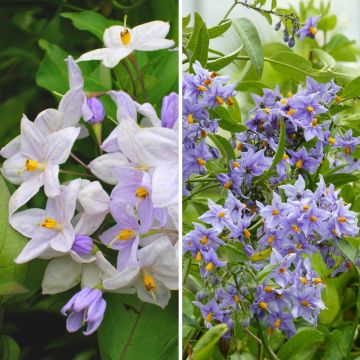
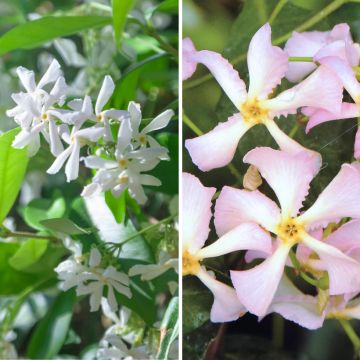
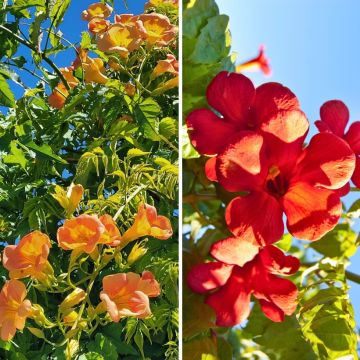
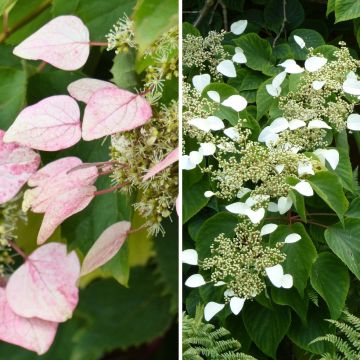
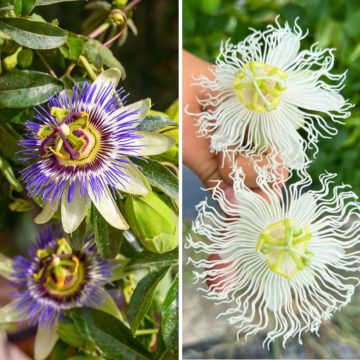

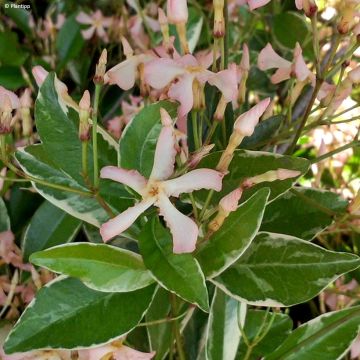

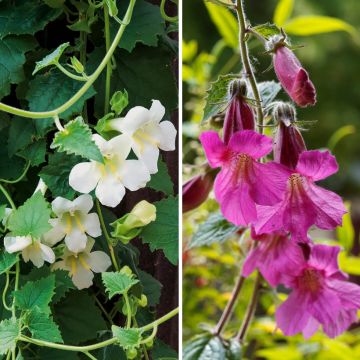
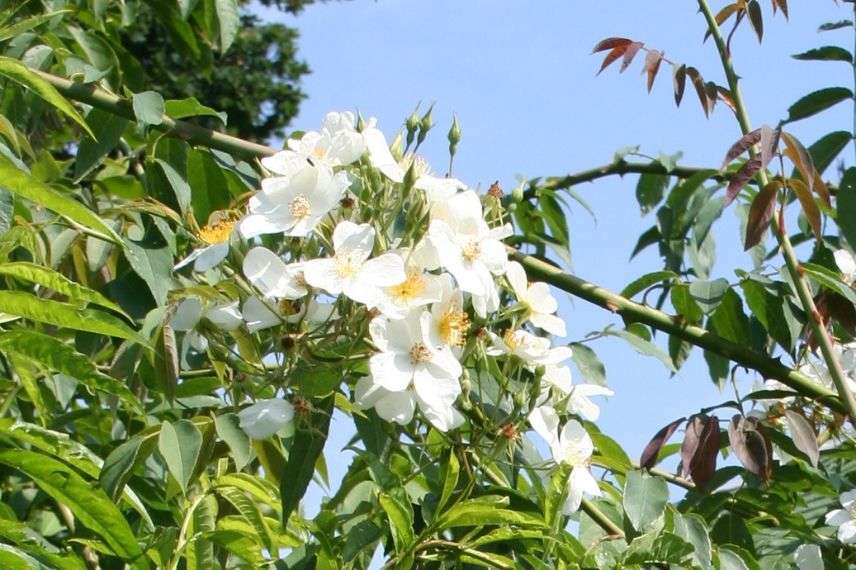
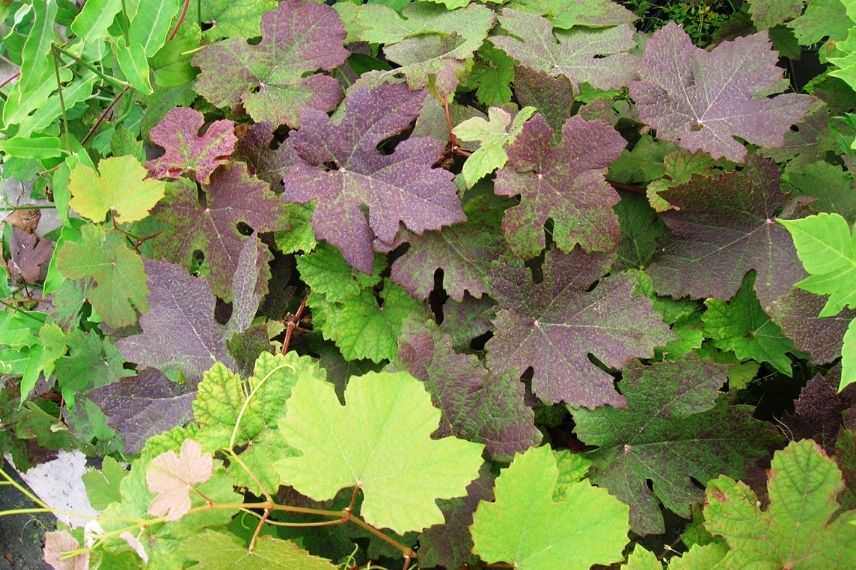
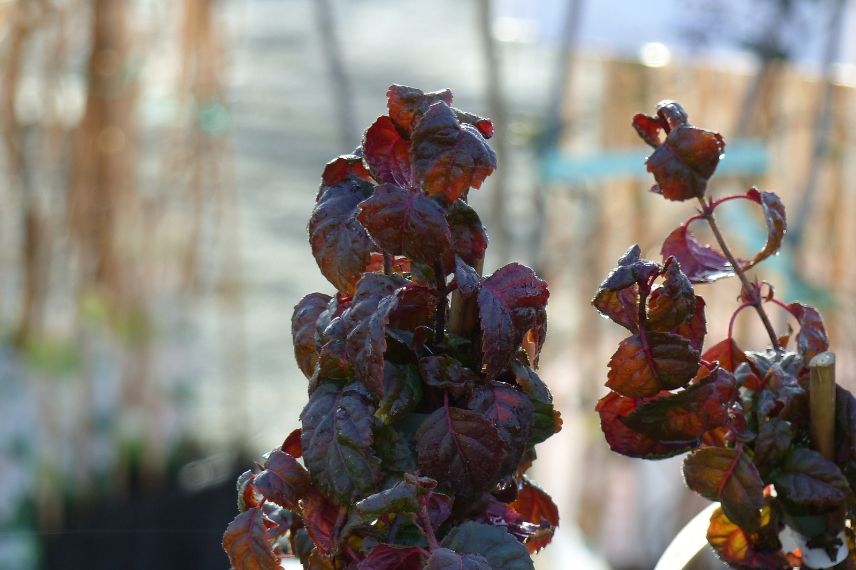
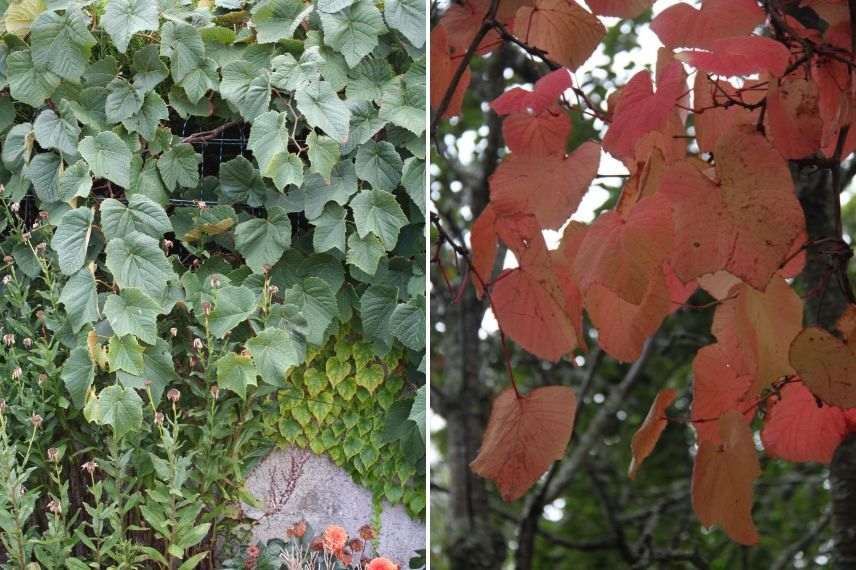
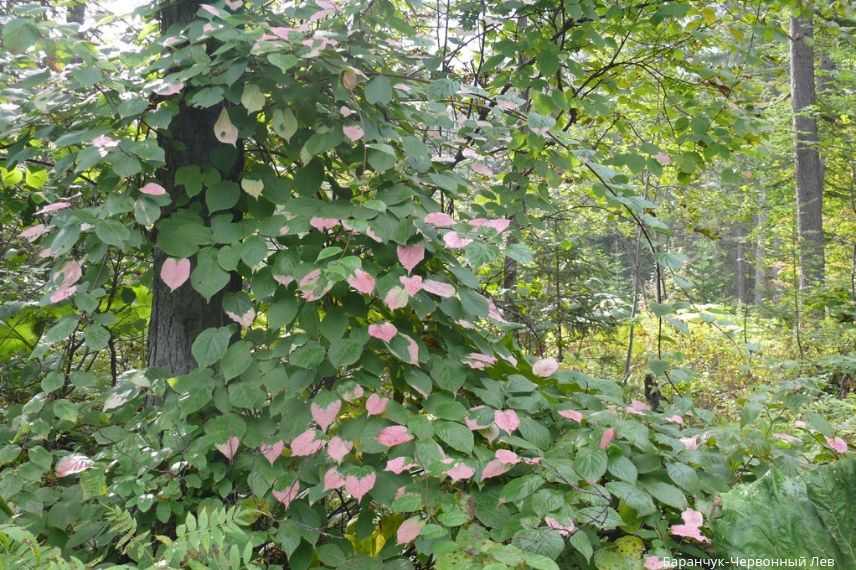
Comments